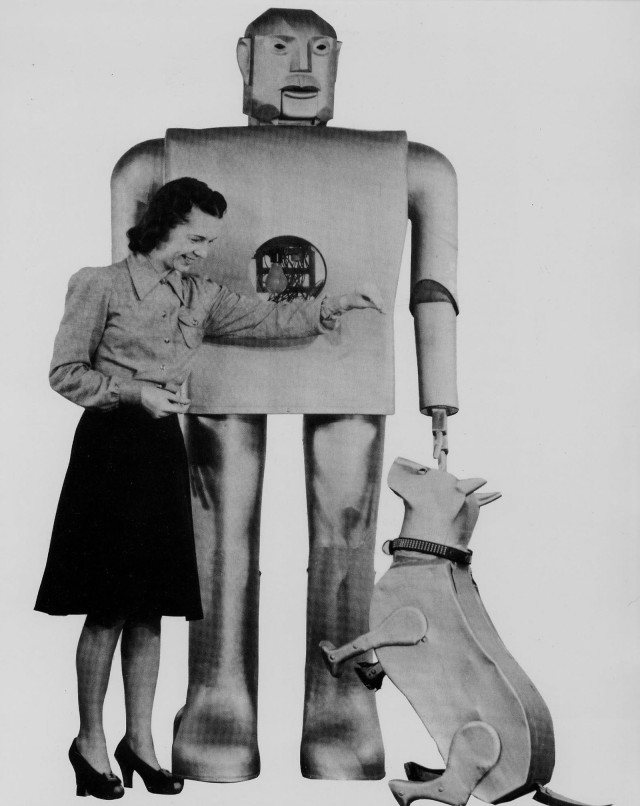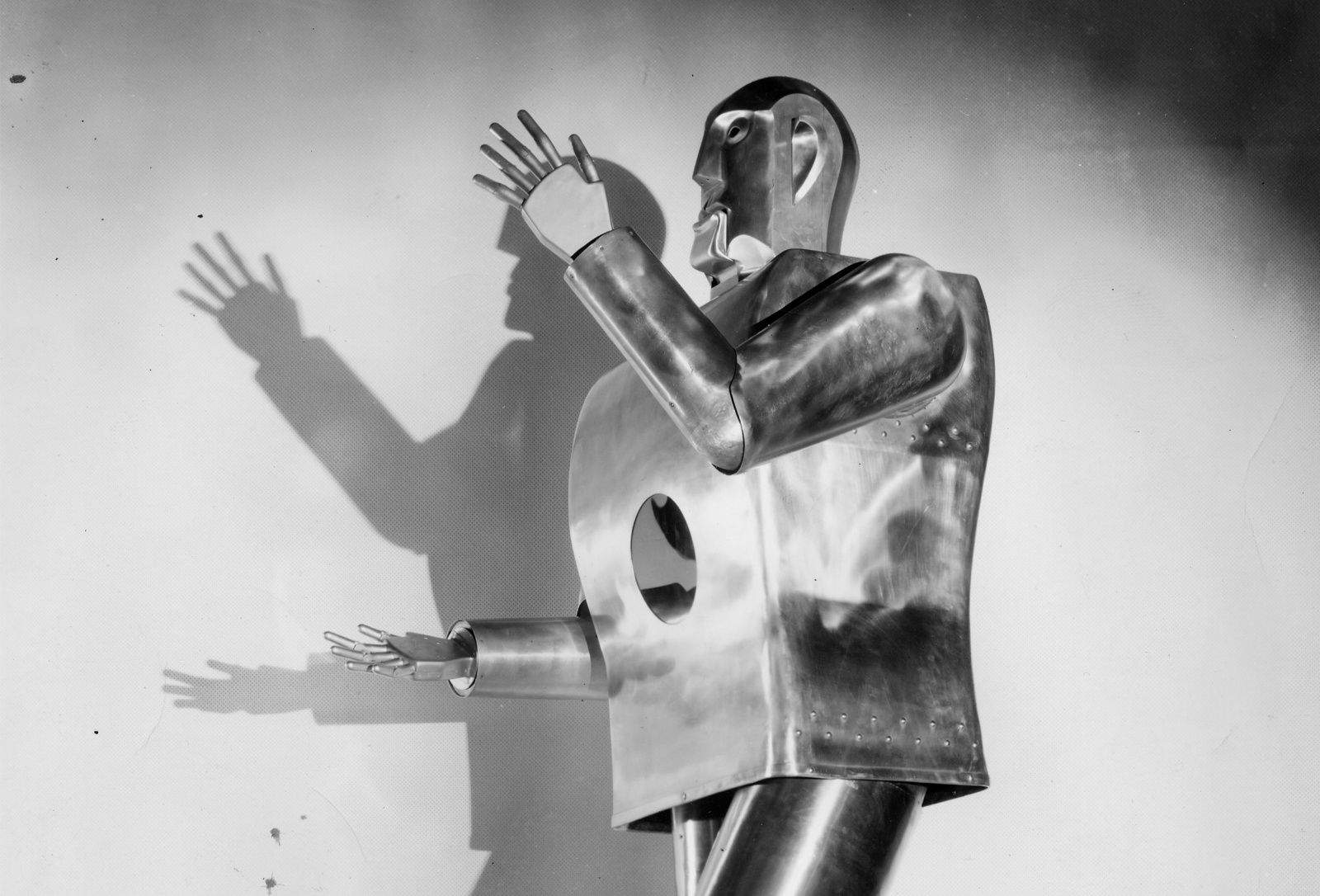America’s oldest surviving robot no longer smokes cigarettes.
 Long lines of people no longer wait to see him, topless women haven’t danced around him in years and his legs have been broken since that amusement park gig.
Long lines of people no longer wait to see him, topless women haven’t danced around him in years and his legs have been broken since that amusement park gig.
But Elektro is home now, his head reunited with his body, cared for by a man named Scott Schaut, who is so fiercely protective that museum requests to borrow the gold robot usually end with him replying “over my dead body.”
This post contains affiliate links. Cult of Mac may earn a commission when you use our links to buy items.
Built by Westinghouse in Mansfield, Ohio, in 1937, Elektro was a 7-foot, 250-pound star of the World’s Fair two years later. His fame – and, thankfully, not his smoking – made an impression on many boys who credit the robot with inspiring them to pursue careers in science and engineering, Schaut said.
To understand the robot’s place in history, the curious can find Elektro quietly residing in the Mansfield Memorial Museum as the jewel of an extensive archive on Westinghouse’s ambitious robotics program that once called the Rust Belt city home.
The road home was as complicated as the circuitry that brought Elektro to life.
“He stays here until I am dead,” said Schaut, director of the museum. “When I die, his entire archive will go to another museum as one collection. The deal is the collection cannot be separated. He’s too important.”
Millions stood in line for as many as three hours to watch Elektro during his 20-minute performances at the ’39-’40 World’s Fair in New York City. The star of a line of Westinghouse robots, Elektro was built with a hole in his chest, his creators knowing people might think the robot worked because of someone inside.
He was not just a show-bot, Schaut said. There were no people behind the scenes pulling levers. Elektro was a package of then-sophisticated technology.
The aluminum Elektro was designed with a system of camshafts, gears and motors. He could turn his head side to side and up and down. He talked and his mouth opened and closed. His arms moved independently with articulated fingers. A bellows system enabled him to smoked cigarettes, which were lit by his operators.
“Smoking was a popular thing to do back then,” Schaut said. “One of the operators used to smoke a pipe and would have to clean the tubes that helped Elektro smoke after performances. (The operator) eventually stopped smoking the pipe.”
Elektro’s innards were made up of frequency-regulating tubes, telephone relays and photoelectric cells. Providing the operator stayed with the script, Elektro could walk, talk and count his fingers. The control unit transferred voice commands into electrical impulses through the telephone relays and vacuum tubes. As commands were spoken to him, a lightbulb would flash, letting the operator know he was receiving the signals.
Elektro was later joined by a robotic dog, Sparko; after the World’s Fair, the two embarked on a cross-country journey. Schaut said a female companion was planned for Elektro but when World War II broke out, the aluminum that would have been used to build her went toward war efforts.

Elektro and Sparko were a show once again after the war, traveling to stores pedaling Westinghouse appliances and making television appearances. In 1957, Westinghouse moved him to Pacific Ocean Park in California where he was an act.
Hollywood came calling. The makers of Sex Kittens Go to College, a B-film starring Mamie Van Doren, cast Elektro as a character named Sam Thinko. Thinko falls in love with Van Doren’s character.
During a dream scene, Elektro’s head turns, his eyes light up and smoke comes out his neck as topless burlesque dancers gyrate around him (below, look for Elektro in a trailer for the movie).
After the 1960 film, Elektro was dismantled and crated, his head eventually given as a retirement gift to the former Westinghouse employee who designed Sparko. The head eventually found it’s way to Jack Weeks, whose father designed a lot of Elektro’s electrical components. The elder Weeks actually saved the robot from being cannibalized for metal during the war.
The head remained on Jack Weeks’ coffee table, an unlit cigarette in its mouth, until the brother of a former employee who had Elektro body parts in crates contacted him just before they were included in an auction.
The head rejoined the body thanks to Schaut, who began research into the history of the Westinghouse robots in 2003 and got Weeks’ to seek out the lost body. In 2004, Elektro was assembled for the first time since the movie.
During a private opening at the museum for former Westinghouse employees, including some of the robot’s operators, a woman approached Elektro. She worked alongside Elektro and Sparko but when interviewed prior to the opening, she remembered very little.
As she approached Elektro, his eyes opened and he extended a hand toward hers.
“She closed her eyes and started leaning back,” said Schaut, who wrote a book on Westinghouse’s robots. “I thought she was going to faint. Then she opened her eyes and all of these memories of Elektro just started spewing out of her.”
https://youtu.be/JYHt8IcNx1E


